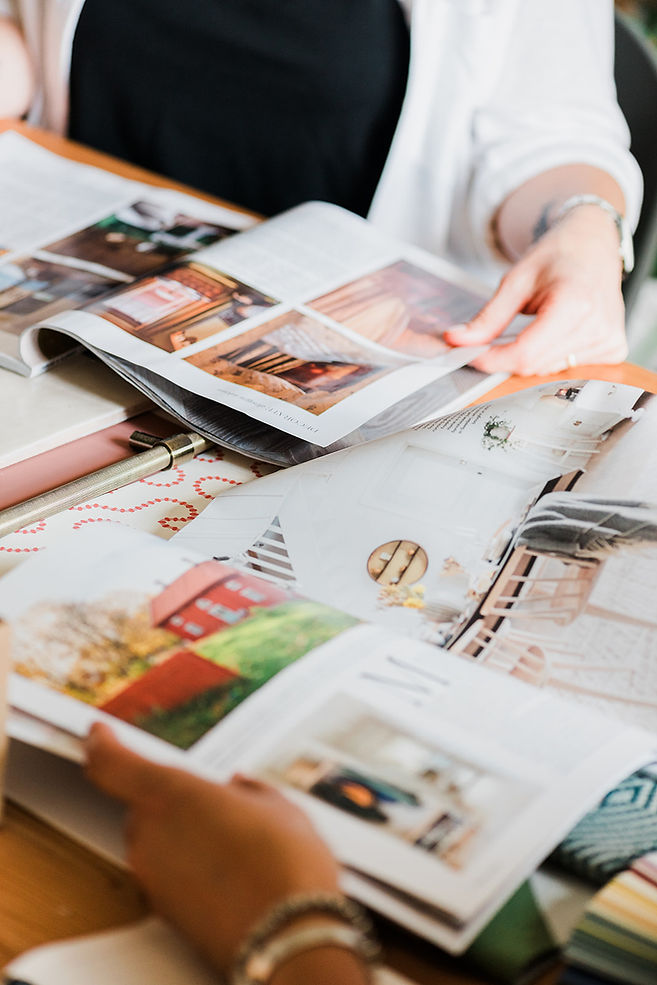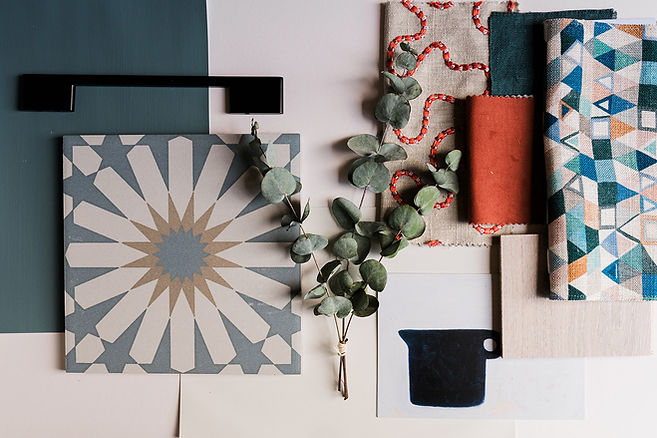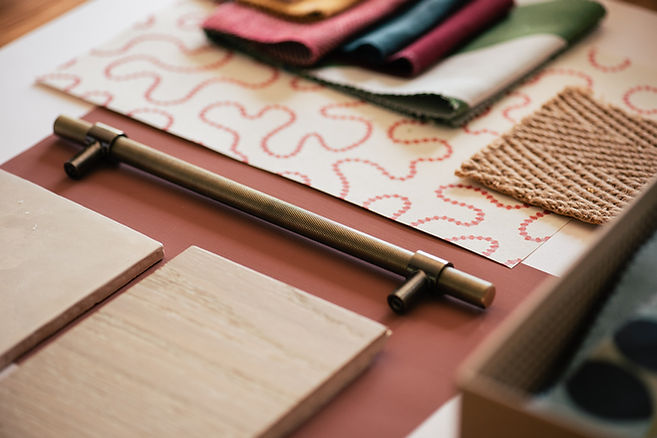HOW TO START A DECORATING PROJECT: A STEP-BY-STEP GUIDE
Embarking on a home decorating project can be both exciting and overwhelming. The prospect of transforming your living space into a haven that reflects your personality and style is undoubtedly enticing, but the multitude of choices and decisions can often leave you feeling daunted. In this guide, I'll walk you through the process of starting a decorating project in your home, helping you navigate the initial stages with ease and confidence.

A STEP-BY-STEP GUIDE
1. Coping with the Overwhelm
-
Understand that feeling overwhelmed is a natural part of the process
-
Break down the project into manageable steps to make it more approachable
-
Follow every step of this guide and stay on track
2. Take Your Time
-
Resist the urge to rush through the process; this is how expensive mistakes occur
-
Allow yourself the time to explore various styles and themes to find what truly resonates with you
-
You are creating a home, this is not a race. Depending on the size, some projects take several years to complete
-
If you have bought a renovation project try to live in the space for a year to see how you use it, where the light falls and consider what you would change
3. Develop a Brief
-
Take a critical look at your home and make a note of what works and what doesn’t work
-
What is the room to be used for?
-
Who will use the room and when?
-
How do you want the room to feel?
-
What can’t be changed in the room?
-
Consider the functionality and flow of the space
-
Identify key elements that need improvement or updating

4. Create a Wish List
-
Compile a wish list of elements you'd like to incorporate into your new design
-
Include both practical and aesthetic considerations
-
Assess your budget realistically and make adjustments to your wish list accordingly
5. Budget
-
Set a budget and be realistic
-
Good schemes are built up over time so see if you have existing furniture you can reuse or shop your home for artwork, accessories and soft furnishings or save up for a good quality bed or sofa that you will love for years to come
6. Create a Floor Plan
-
Measure your space and create a floor plan to visualise the placement of furniture
-
Ensure that the layout promotes functionality and a harmonious flow
-
Experiment with different arrangements before finalising the plan

7. Invest in Big Ticket Items
-
Allocate a portion of your budget to high-quality, long-lasting pieces like beds and sofas.
-
These foundational items serve as the backbone of your design and are worth the investment. Buy the best you can afford
-
Choose timeless styles that can adapt to evolving tastes
8. Gather Inspiration
-
To define your style start looking for inspiration
-
Dive into Instagram, Pinterest and Houzz and save posts and create boards that resonate with you
-
Flip through magazines and books as these provide a wealth of inspiration
-
Look for themes, colour palettes and design elements that consistently draw your attention
-
Visit showrooms and design exhibitions
-
Is there a springboard object that will influence the whole scheme such as a painting, wall hanging or a piece of furniture you will be keeping?
-
Read my Journal post about where to find inspiration here

8. Consider Colour
-
Choose a colour scheme that complements your style and creates the desired feeling
-
Consider the orientation of your room. North facing rooms will be cooler and benefit from warmer colours. South facing rooms will be the opposite.
-
Complement and contrast – Use complementary colours for a balanced scheme or add a pop of colour to create a bit of energy
-
Use colours you are drawn to. This could be muted and calm or saturated and energetic. Think about the space and what would work best.
9. Create a Moodboard
-
Using the inspiration you collected in step 8 create a moodboard to keep your scheme focussed
-
This can be digital or by using tear sheets from magazines, postcards, etc
-
Include aspirational images, paint swatches, fabric and wallpaper samples and image of furniture
-
Read my Journal post about how to create a moodboard here

10: Inject Some Personality
-
Add colour in surprising places such as the edge of a door or the inside of a cupboard
-
Have a Red Thread running throughout your scheme. Pick one colour which is repeated throughout the home even if it is as simple as the colour of a cushion on the bed which relates to the wall colour in the living room
-
Inject some personality by using collected treasures as accessories. Don’t buy everything from one shop, but mix old with new and include items that tell your story
11: Create a Schedule
-
Once you have planned your space and have your moodboard to hand create a schedule to carry out the work
-
This could be based around ordering furniture (big items can have a long lead time), working with contractors or doing DIY around your work hours
-
Keep track of your finances throughout the whole project so spending doesn’t get out of hand
TOP TIPS
Take your time – be patient
If possible concentrate on one room at a time
Consider your space carefully
Create a scheme using 4-6 colours to use throughout the whole house
Stay focussed and don’t keep changing your mind
Embarking on a decorating project requires patience, thoughtful planning, and a bit of self-discovery. By taking the time to develop a clear vision, prioritise effectively, and make intentional choices, you can create a home that not only looks beautiful but also reflects your unique personality and lifestyle. Remember, the journey is as important as the destination, so enjoy every step of the process as you turn your house into a home that truly feels like yours.

If you are struggling with a project and would like some help why not give me a call or drop me an email?
Call me on 07747 555879
or use the button below
If you would like to see what inspires me each month why not sign up to my monthly newsletter? Here you will see what projects I am involved in, a snippet of the latest journal post and, of course, see what is inspiring me each month.
Head to the Home page to sign up.
